Polygon Wood, near Ypres
in Belgium, was captured by the Australian 5th Division on September 26,
1917 during the Battle of Menin
Road. It was a much disputed piece
of ground and the area had changed hands several times. Shelling had
totally destroyed the "wood" and all that was left were
shattered stumps.
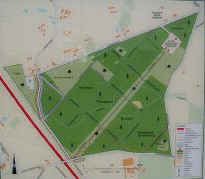 |
- Polygon Wood was named for
its shape which is clearly seen on this visitor information
sign.
- By the time the Australians got there there were
no trees left and it look like a wasteland.
|
The "Buttes", a large earthern mound which had been the
backdrop of the Ypres rifle range before the war formed the most
recognizable landmark. The German
defenders had commanding views over the surrounding countryside and they
fortified the Buttes with machine guns and barbed wire. Polygon Wood
formed part of the German "Wilhelm Line" defence system.
Dugouts and tunnels were constructed within it.
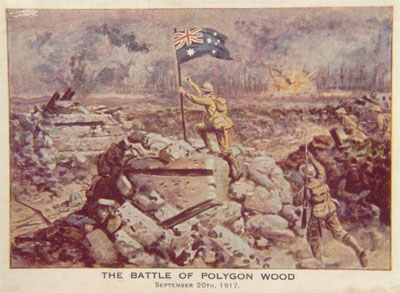 |
Although parts of the
Division had been present at Bullecourt in April 1917 the attack on Polygon Wood was the
5th Division’s first major battle since it was mutilated during the
disastrous attack at Fromelles in July 1916 .
In the attack
with the Australian 4th Division on its left and five British Divisions
also taking part.
|
- During the attack on Polygon
Wood, a pillbox located near Black Watch Corner held up the advance. It was
eventually silenced. Its' occupiers surrendered. Captain F. Moore
rushed forward to accept the surrender of the pillbox. According to
witnesses, a German soldier who had already surrendered saw Moore
approaching, picked up his weapon, killed Moore and then surrendered
again.
- Understandably upset the Aussies were outraged at this act of treachery and
killed the German concerned. They intended to kill the whole garrison if
other Australian officers had not intervened.
The troops advanced in the early
hours of September 26, close behind a creeping artillery barrage. The
creeping barrage that the troops advanced behind on September 26, in the words of C. E. W. Bean, Australia’s Official War
Historian, “the most perfect that ever protected Australian troops”.
The Australians advanced in
several stages against fierce resistance. Most of the Germans had to be
killed because they would not surrender.
The Australians captured the
pillboxes, They used a style that would later become common. The
pillbox would be attacked with machine gun fire supported by bombardment
from grenades or rifle grenades or trench mortars.
Meanwhile as the enemy was pinned down
a team of soldiers would sneak around and attack the pill box from the
rear. This technique was very costly but more effective than head on
attack.
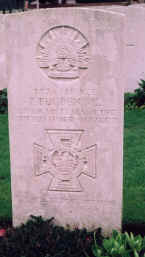 |
Private
Patrick Bugden, 31 Bn AIF, led small parties in the
capture of two pillboxes and later rescued a captured Australian
corporal who was being led to the rear by three Germans.
On at least five other
occasions Bugden rescued wounded men under heavy fire. He was
killed on September 28.
For his bravery and devotion to
duty he was awarded the Victoria Cross. |
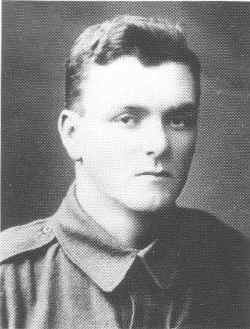 |
| Private
Bugden was buried at Glencourse Wood, with
an fancy timber cross and a low timber fence. His remains were
later moved to Hooge Crater Cemetery.
The 5th Division occupied the
wood on 26 September. The Division's final objective, beyond
the wood, was secured by the afternoon of the 27th. |
|
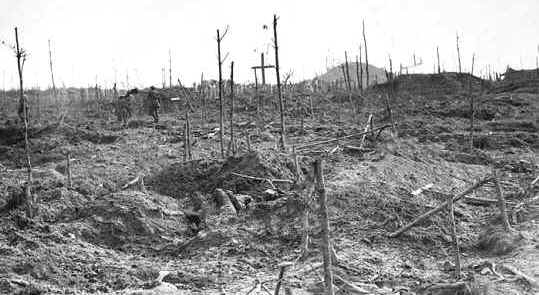
|
|
Polygon Wood 1917 |
|